2022.07.28
Editor’s note:
The World Tourism Alliance (WTA) always regards “promoting tourism for poverty alleviation” as one of its important missions. In the past five years, it has collected 100 best practices of poverty reduction through tourism and another 100 of rural revitalization through tourism from worldwide. Through case studies, it has summed up development models and experience, and contributed to China’s rural revitalization and global cause of poverty reduction through tourism.
On July 26, the WTA Workshop: Rural Revitalization through Tourism was held in the homestay cluster zone in Leisure Valley, Sishui, a county in the city of Jining, Shandong Province. As a model of rural revitalization in Shandong, the homestay cluster zone in Leisure Valley was included in the 2021 WTA Best Practices of Rural Revitalization through Tourism. At the workshop, WTA Secretary General Liu Shijun delivered a keynote speech, the full text of which is as below.
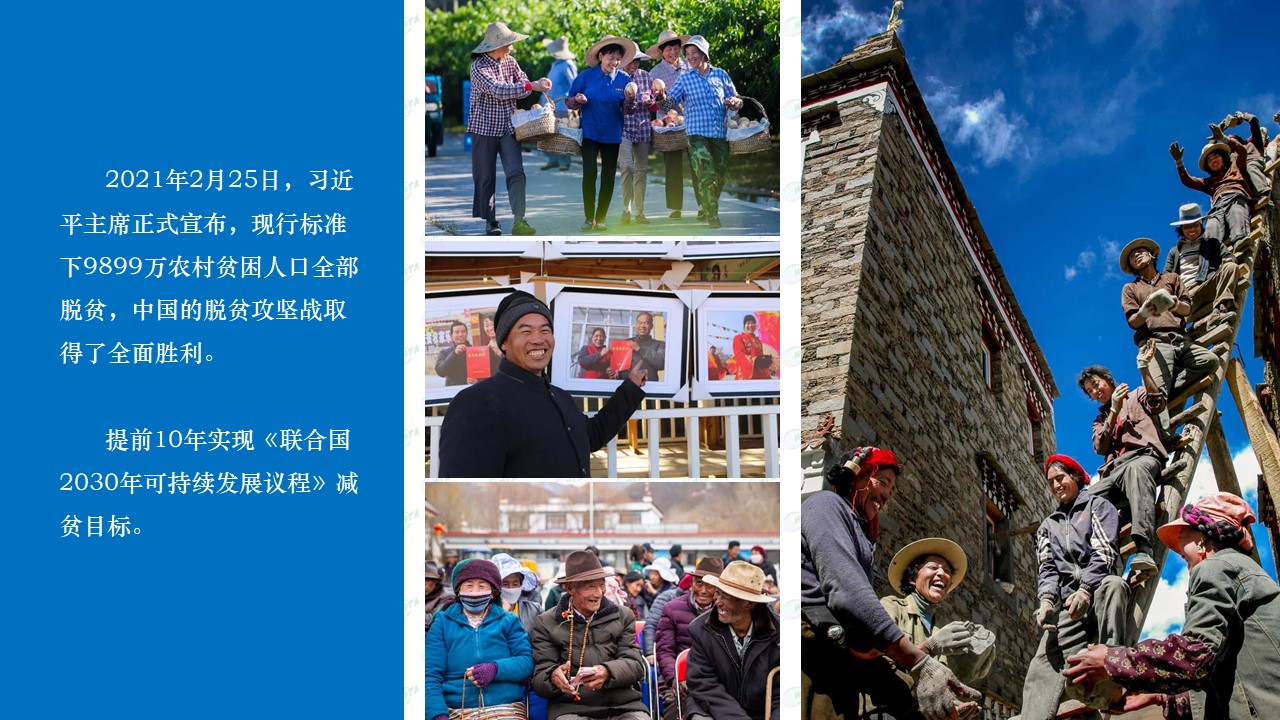
Poverty is a chronic disease of human society and a source of conflict and instability. The eradication of poverty is a major challenge facing today’s world in practice and theoretical research. The United Nations lists 17 global goals in its 2030 Agenda for Sustainable Development, and the No.1 goal is to “end poverty in all its forms everywhere.” In this field, China has played an important role and actively contributed to the realization of this goal.
From the proposal of the theory that “lucid waters and lush mountains are invaluable assets” to the drive of building a beautiful countryside, the Chinese government has built a new-type countryside featuring a beautiful environment, booming industries, economic prosperity, and honest and friendly residents. After eight years of continuous efforts, China has fulfilled the goal of poverty alleviation as scheduled and eliminated absolute poverty and overall regional poverty. Many other countries have also made remarkable achievements. The goal of ending poverty has truly united and will continue to unite the entire world.
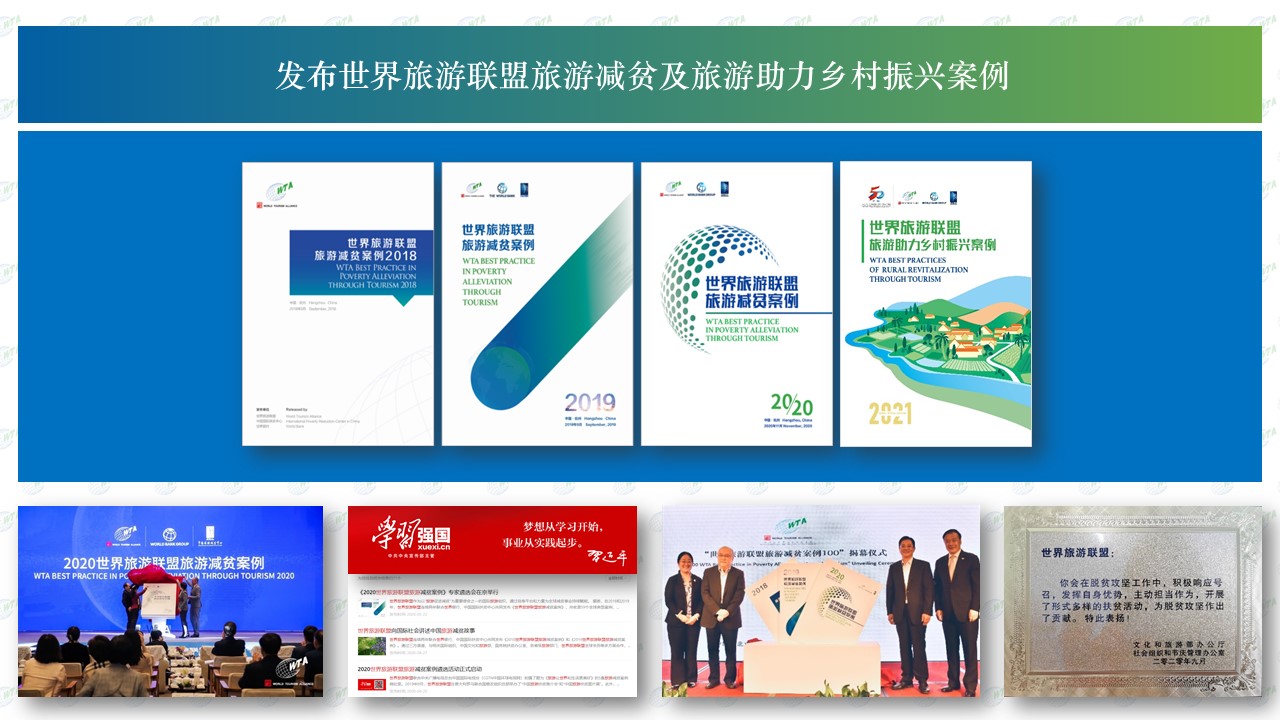
Since its establishment, the WTA, with the mission of “Better Tourism, Better World, Better Life,” has been committed to promoting tourism for peace, development and poverty alleviation, and always regarded tourism development as one of the important tasks to combat poverty and drive rural revitalization. First, we collected and published best practices of poverty reduction and rural revitalization through tourism. From 2018 to 2020, together with the World Bank and International Poverty Reduction Center in China, we released the Best Practices of Poverty Reduction through Tourism for three consecutive years, containing 100 such practices (89 in China). The 2021 WTA Best Practices of Rural Revitalization through Tourism published last year includes 50 practices which, recommended by the Ministry of Culture and Tourism, were used to organize one of the 50 activities marking the 50th anniversary of China’s restoration of its lawful seat in the UN. This year, again in cooperation with International Poverty Reduction Center in China, we released another 50 best practices of rural revitalization through tourism. By collecting, sorting and analyzing these practices, we have drawn helpful experience in fighting poverty for people to learn from, absorb and refer to. These best practices will also enhance China’s exchanges and mutual learning with other countries in this field, and contribute to global poverty reduction through tourism.
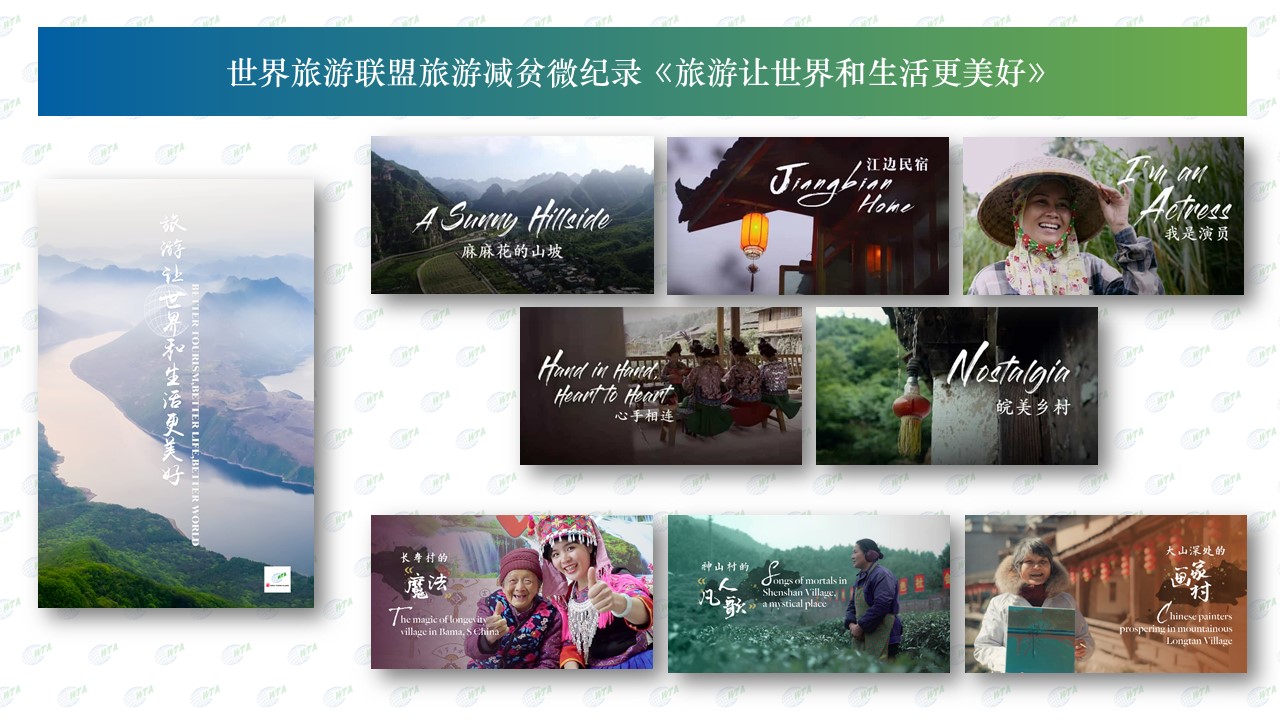
Second, we shot a documentary on poverty reduction through tourism. With the support of the Bureau of International Exchanges and Cooperation of the Ministry of Culture and Tourism and our member units, we, in collaboration with China Media Group and CGTN, shot the mini-documentary series ”Better Tourism, Better Life, Better World” based on real-life cases, including eight episodes in two seasons. It is broadcast on all platforms of CGTN worldwide, including its new media outlets on Facebook, Twitter and WeChat. The first season won the third prize in the national competition and the second prize in the thematic competition of 2020 Tell China’s Stories Contest which was hosted by China International Communications Group under the guidance of the State Council Information Office. This year, we continued our cooperation with CGTN and shot the third season of the documentary in Enshi, Hubei Province, and Yunqiu Mountain, Shanxi Province, to show the world China’s sustainable development concept, achievements in building a new-type countryside and new look of development.
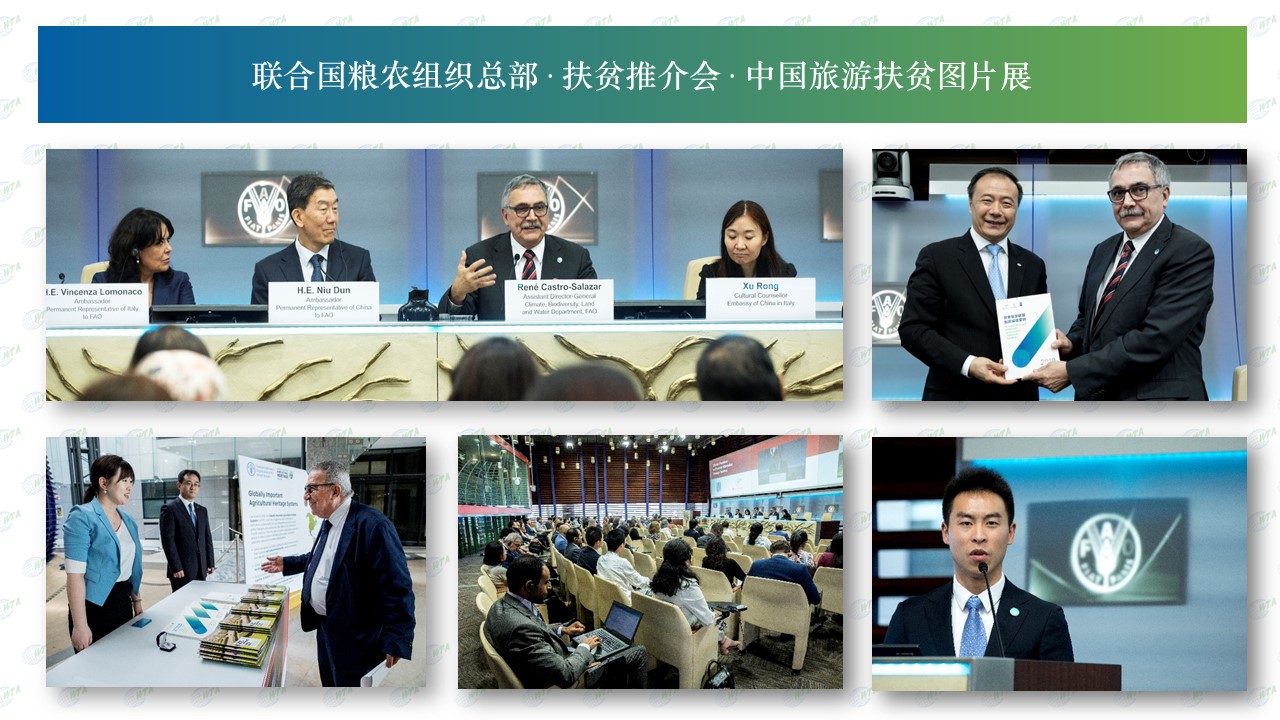
Third, we extensively communicated China’s practices of and achievements in poverty reduction through tourism to the international community. In September 2019, we held a meeting on China’s poverty alleviation through tourism at the headquarters of the UN Food and Agriculture Organization (FAO), and released relevant best practices and a promotional mini-documentary. Meanwhile, we launched a week-long photo exhibition on the same theme, to show China’s achievements in such fields as poverty reduction through tourism, and integrated development of culture and tourism. In addition, at international forums and events such as the United Nations World Tourism Organization/Pacific Asia Travel Association International Forum on Tourism Trends and Outlook, the China-Africa Video Seminar for Cooperation in Poverty Reduction and the China-South Africa Online Forum on Cooperation in Culture and Tourism, we made keynote speeches to introduce China’s practices of and achievements in poverty reduction through tourism. The overseas agencies of the Ministry of Culture and Tourism also promoted the best practices we published extensively overseas, sharing China’s practices of and experience in tourism-enabled rural development.
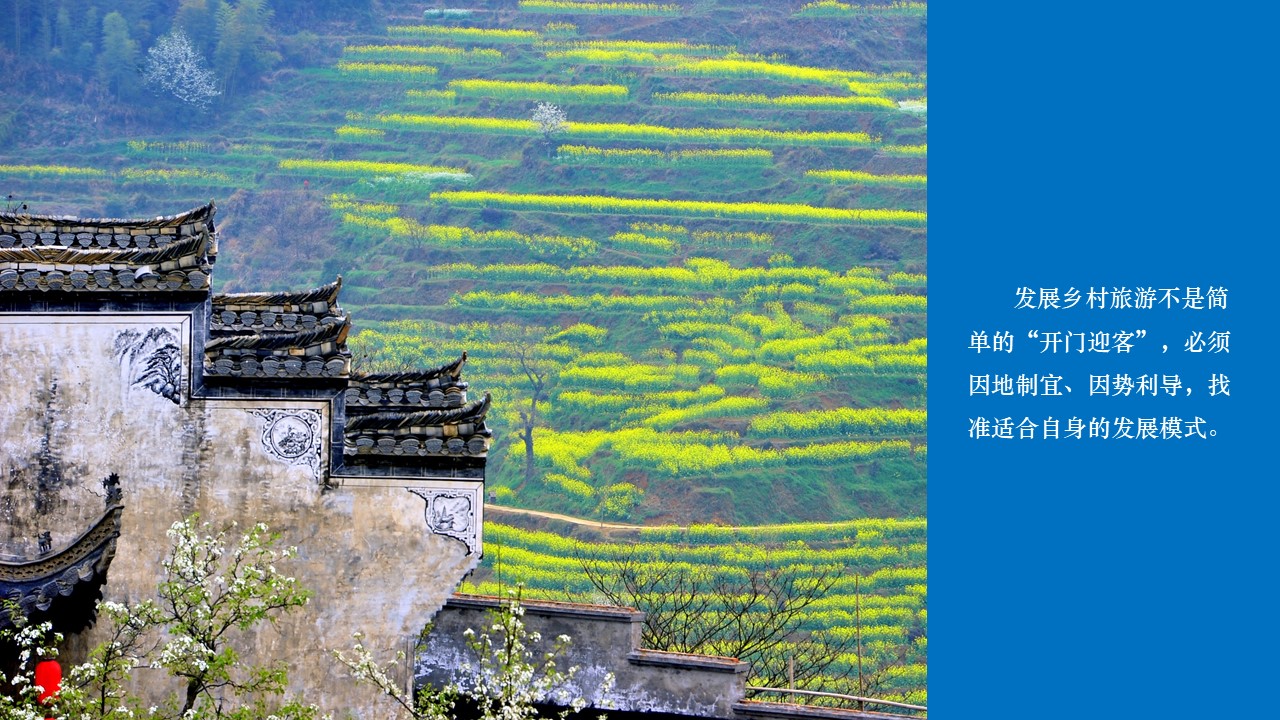
Development is the prerequisite for solving all the problems facing the countryside. As shown in these best practices, the tourism industry, which is prominently comprehensive, involves multiple stakeholders and has enormous impact on other industries, through scene reconstruction and effective transformation of rural natural resources, ecological environment and cultural heritage, has attracted visitors in a market-oriented way, and brought in the flow of capital, technology and information to sustain rural development. But developing rural tourism is not simply “opening doors to welcome visitors.” It must be done according to local conditions and circumstances. Each destination needs to find the development model that suits it, and overcome problems that arise in development. From the 150 best practices selected, we have summarized the following five models for reference.
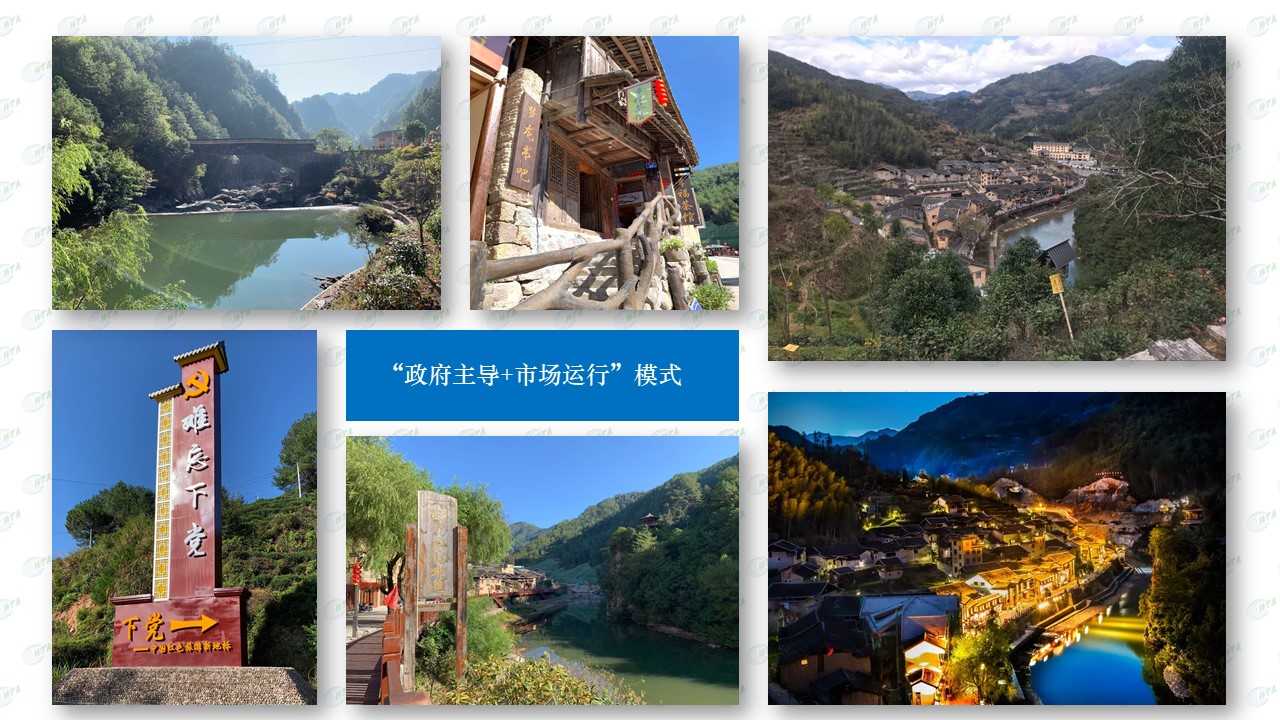
The first model combines government leadership and market-based operations. Under this model, the government acts as the coordinator and sets the stage while the masses participate in the operations. For example, in Xiadang Village, Shouning County, Ningde City, Fujian Province, the government, responsible for coordinated planning and centralized management, has laid down the approach to development that is themed on Party building, centers around poverty reduction, focuses on tourism and is supported by agriculture, and has built the village into a new landmark for CPC heritage tours in China. Under this model, the government plays an active role in the early stage of development: it not only plans and guides at the macro level, but also concentrates resources to improve the public service environment. But later as the economic vitality of the countryside is stimulated and the local tourism industry starts to flourish, it should take a back seat and give more autonomy to market players, and meanwhile promote institutional innovation, improve infrastructure, and step up efforts in marketing to promote rural tourism and socio-economic development on the whole.

The second model brings together tourism enterprises, cooperatives and poor households. By guiding mature tourism enterprises to invest in poverty-stricken areas, the local will become more market-oriented and efficient in combating poverty. Rural households can increase their income by establishing cooperatives and investing with their residences or land use right. For example, Airbnb, a member unit of the WTA, has developed homestays with local cultural characteristics in Jinjiang Village, Longsheng, Guilin in Guangxi, set up a cooperative that involves all villagers, and trained landlords and villagers on how to run homestays. It also marketed them on its online platform, and shared the development fruits with the whole village. Tourism enterprises should accurately identify the people who have just emerged from poverty, put idle resources in rural areas into good use, empower local vulnerable groups such as left-behind children and elderly empty-nesters to better integrate into the mainstream society, inherit, disseminate and inject vitality into the local ethnic culture, and thus promote rural revitalization and increase villagers’ income.
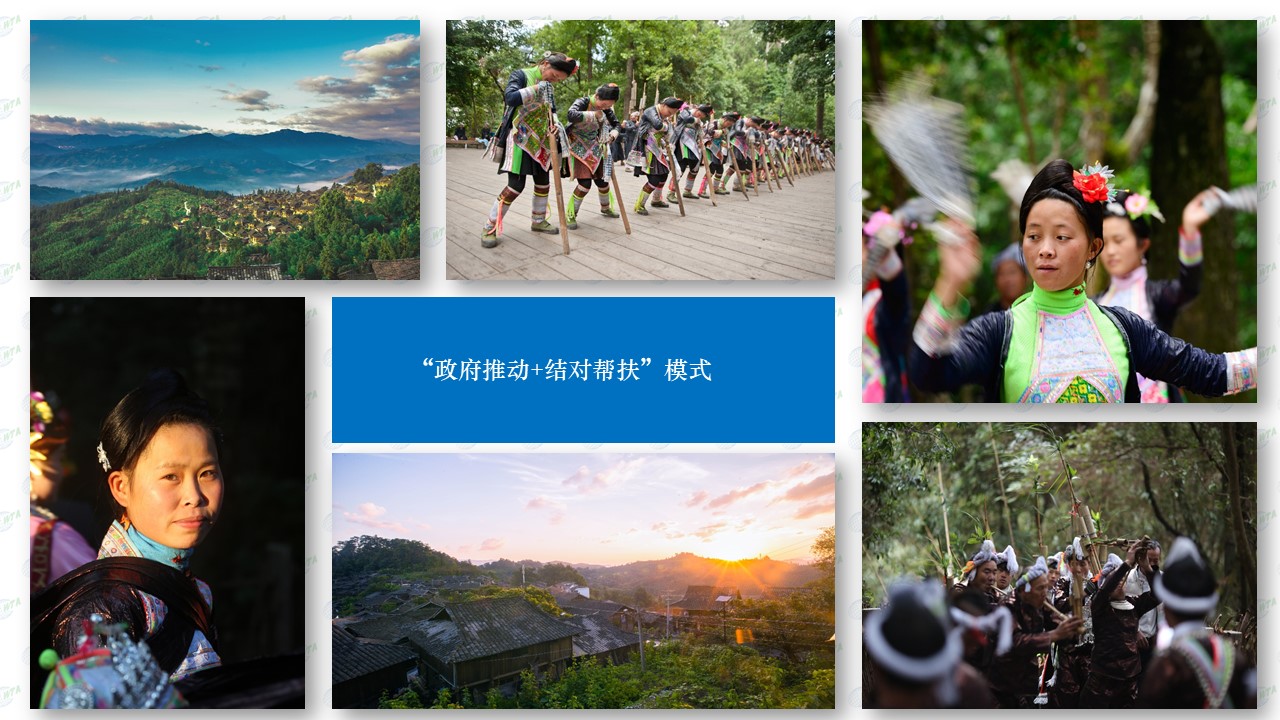
The third model features paired-up assistance driven by the government. Under the leadership of the local government, governments and state-owned enterprises from some developed areas leverage their expertise to help areas that have just emerged from poverty develop rural tourism with personnel, financial and intellectual support. This is one of the models of rural revitalization through tourism advocated by the Chinese government. For example, the district government of Xiaoshan in Hangzhou offers paired-up assistance to Congjiang County, Qiandongnan Miao and Dong Autonomous Prefecture in Guizhou, and the two have continuously strengthened their cooperation in reducing poverty through tourism by increasing two-way exchanges. Xiaoshan has been actively helping Congjiang improve its self-development ability, to blaze a new trail suitable for its development. In addition to the leading role of the government, Xiaoshan mobilized social forces and guided and encouraged more enterprises and social capital to help develop tourism in Congjiang. They have developed specialty industries and boutique tourist routes, deepened culture and tourism cooperation, and introduced more sophisticated tourism services and diverse tourist routes. All this has produced remarkable effects in fighting poverty.
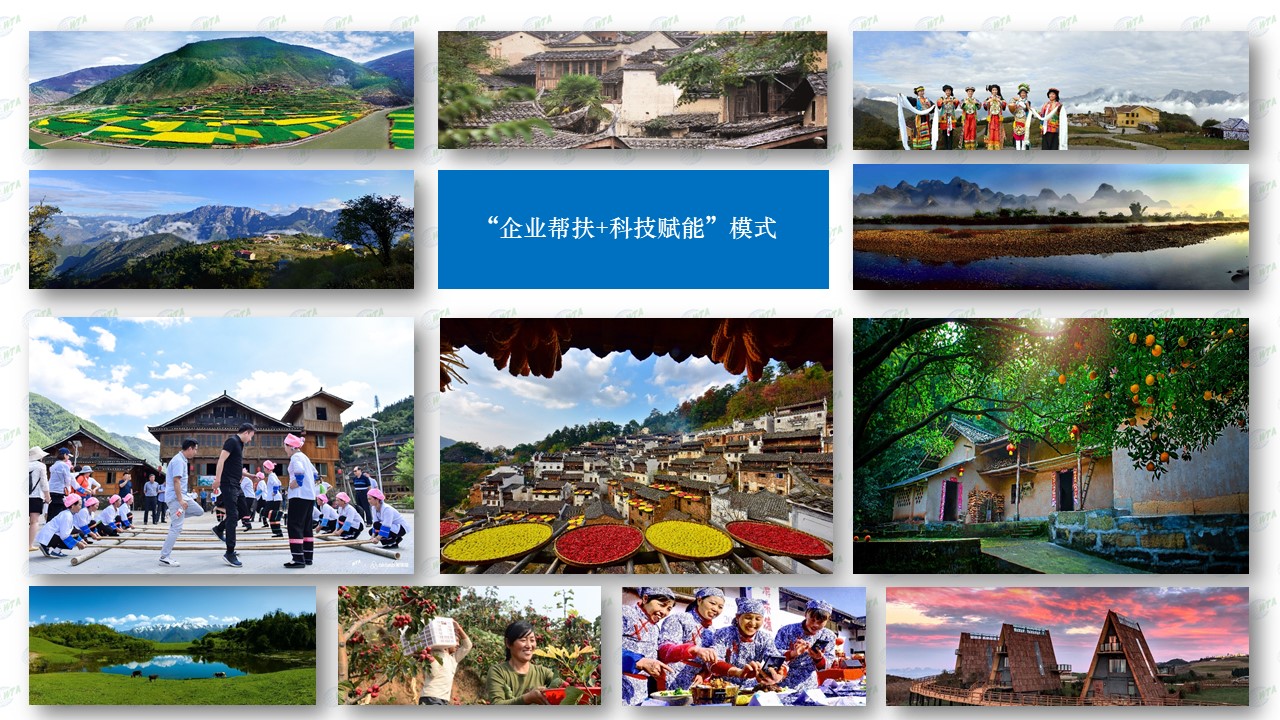
The fourth model involves assistance from enterprises and the empowering role of technology. For rural areas, assistance from outside provides only short-term relief and the key is to help rural areas, especially those that have just emerged from poverty, keep up with the times, develop their capacity for self-development, and build the confidence and capacity to help themselves. Under this model, tourism e-commerce is introduced so that data sharing, real-time marketing are made possible, thus injecting more vitality into rural economy in the combat against poverty and the drive for rural revitalization. Especially since the outbreak of Covid-19, the nosedive in the number of tourists has dealt a heavy blow to rural tourism. Live-streamed marketing of tourism products can help consolidate the achievements in poverty alleviation and create new growth points for rural tourism. Ctrip, Fliggy and other Internet enterprise members of the WTA, leverage their expertise to help rural destinations, customize sale pitches to local culture and folk customs, natural scenery, and specialty products, and develop tourist routes and cultural and creative products, market them online, and organize live-streaming sessions to sell agricultural and sideline products. In this way, they provide targeted assistance with the help of technology.
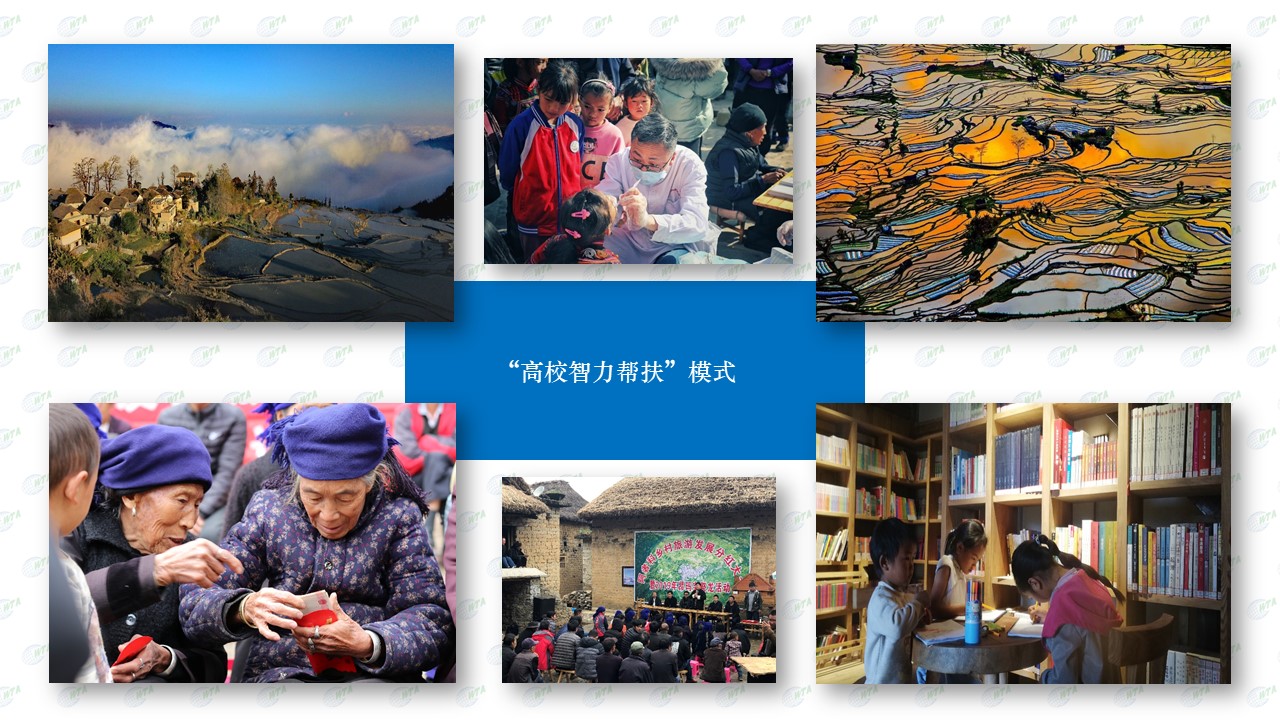
The fifth model features intellectual assistance from colleges and universities. Apart from governments and enterprises, colleges and universities are gradually becoming an indispensable backbone force in poverty alleviation and rural revitalization. Making full use of their knowledge and expertise, teachers and students are actively and deeply involved and provide intellectual support and science-based guidance for rural areas to keep them out of poverty, making up for governments and enterprises in these areas. For example, Bao Jigang, a professor with the School of Tourism Management of Sun Yat-sen University, launched a three-year poverty reduction through a tourism project in Azheke Village, Honghe Prefecture, Yunnan Province. The project team, stationed in the village, led villager to develop tourism, and accomplished three goals of poverty alleviation, heritage conservation and tourist reception at the same time. The project was formally handed over to the villagers after the expiration of the term. At the same time, with Sun Yat-sen University as the lead unit, 22 universities directly under the Ministry of Education have voluntarily formed an alliance for poverty alleviation through tourism, to combat poverty together and contribute more to poverty alleviation and rural revitalization.
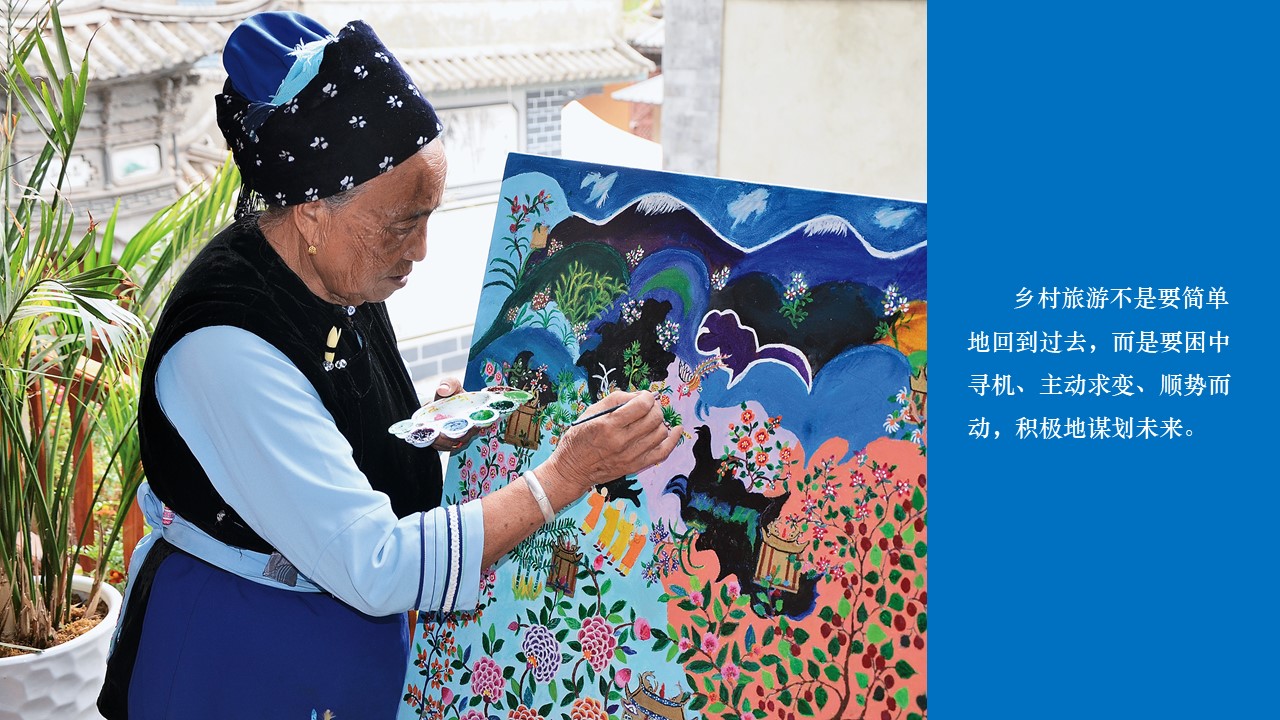
The repeated outbreaks of Covid-19 have brought unprecedented challenges to rural tourism. Travel plans are postponed, the tourism economy has been contracting, and rural tourism operators are struggling to stay afloat as the number of tourists and their income decline, posing serious challenges to consolidating and expanding the achievements made in poverty alleviation. At the same time, the epidemic has accelerated the pace of transformation and upgrading of the supply side of the tourism industry. The trend of individualization and diversification has become increasingly clear, and the demands for family tours, study tours, outdoor leisure tours and slow-paced tours have been growing. Therefore, rural tourism should not go back to what it used to be, but seek opportunities and changes from the crisis, move according to the situation and actively plan for the future. Based on the ideas and practices of poverty reduction and rural revitalization through tourism, we would like to make the following suggestions to better promote global poverty reduction and China’s rural revitalization while driving the recovery of the tourism industry.
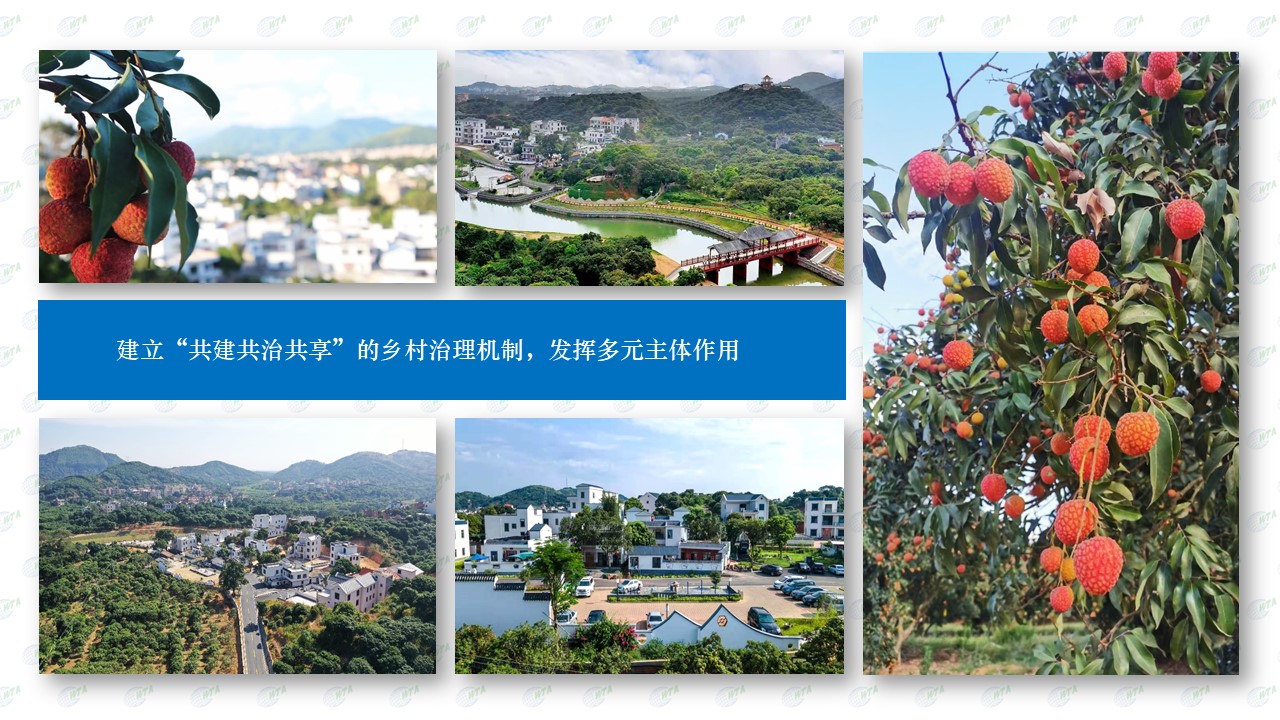
First, establish a rural governance mechanism based on collaboration, participation, and common gains, and give play to the leading role of multiple stakeholders. By “collaboration, participation, and common gains,” we mean to improve the mechanism of introducing capital to the countryside under policy guidance, and organize farmers in a more specialized and socialized manner, so that the government, capital and farmers can draw on each other’s strengths and work with each other to achieve rural revitalization in all respects. For example, in Yuanba Village, Genzi Town, Gaozhou City, Maoming City, Guangdong Province, the model that involves leading enterprises, farmers’ cooperatives, specialized households and farmers is established. On top of improving the standardized cultivation, processing, storage, logistics, e-commerce and scientific research of litchi, it actively develops new business forms such as beekeeping, cultural tours, sightseeing and picking, homestay, health preservation and catering services, and broadens the road to rural revitalization.
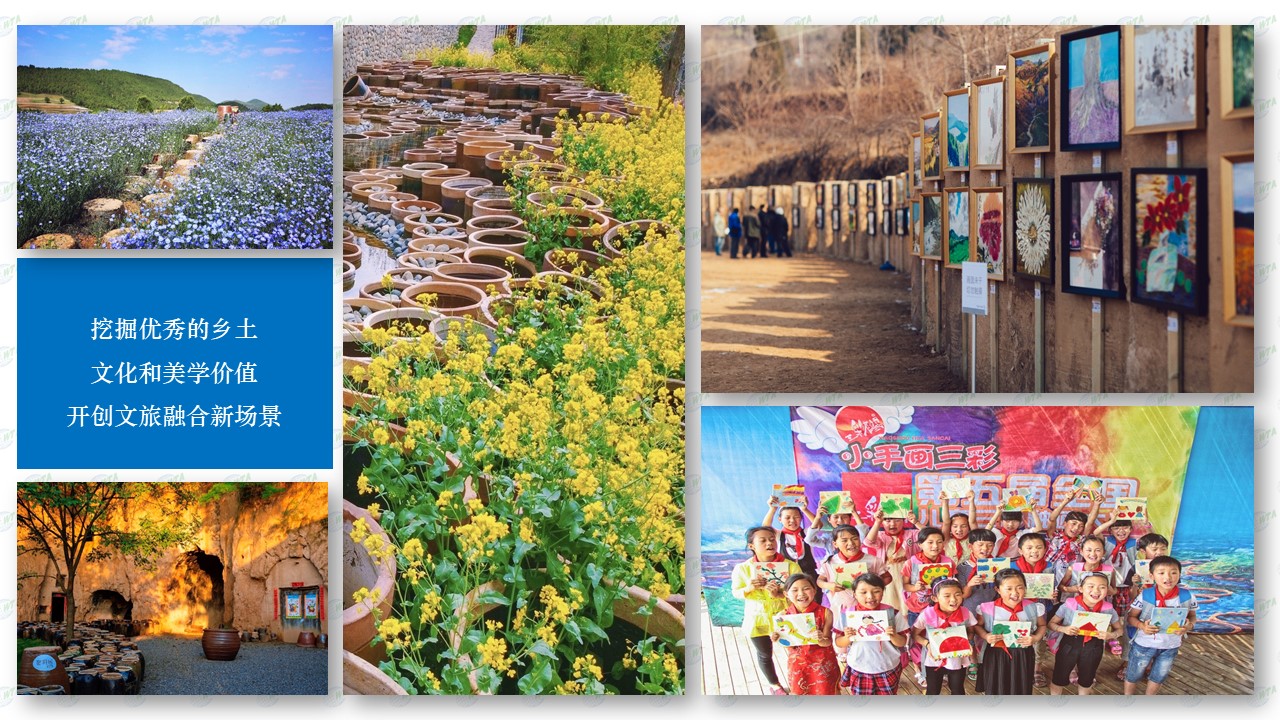
Second, tap on outstanding local culture and aesthetic value, and create new scenes of culture-tourism integration. The primitive landscape and fine traditional culture in rural areas are a treasure, containing the potential and resources for development. In village planning and development, we should pay attention to conserving the original historical relics, sort through the village history, culture and intangible cultural heritage, and incorporate modern convenience and aesthetic elements into them, so as to give them a new life while inheriting them. For instance, Aihe Town in Luoyang, Henan Province, applies the tri-colored glazed art to old caves, old houses and large pottery jars, and positions itself as a pottery heaven and a four-season painting valley. It actively advocates poverty alleviation through art, aesthetic education, education and tourism, promotes the integration of aesthetic education with art tours, gives play to the influence of Luoyang’s tri-colored glaze art, inherits the cultural heritage in an original way and increases the income of villagers.
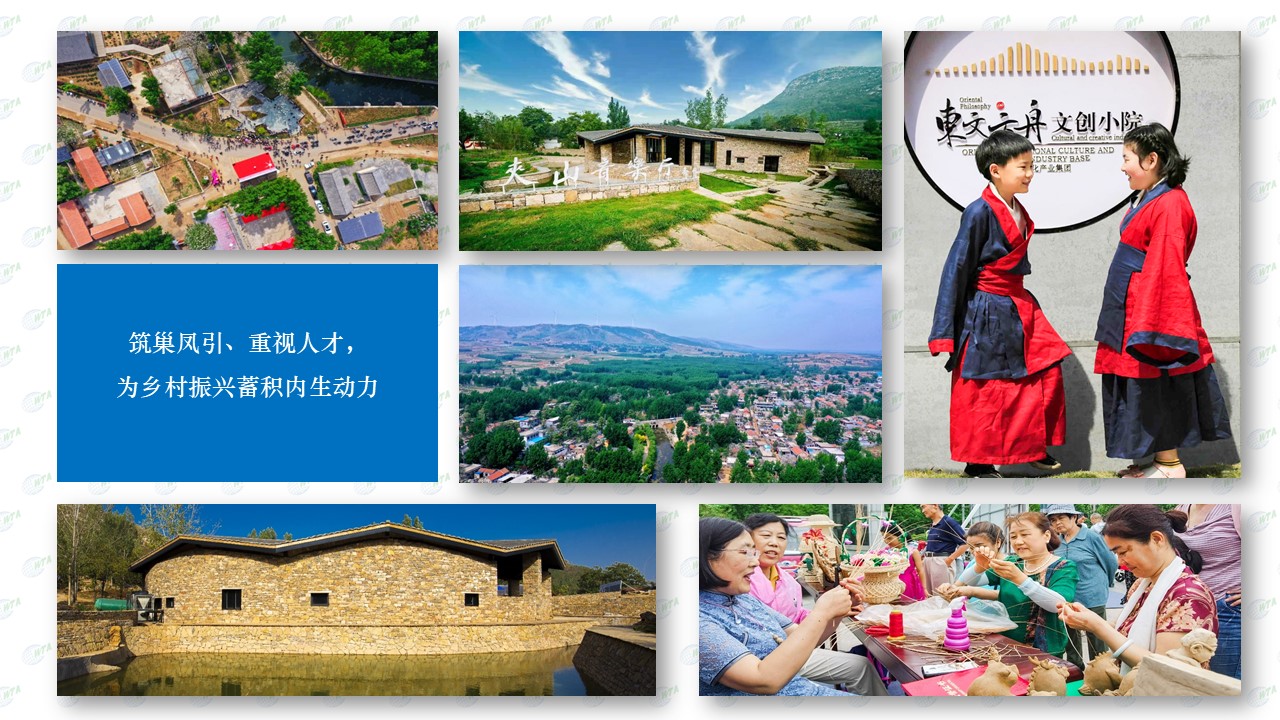
Third, promote institutional innovations attract talented personnel and cultivate the endogenous driving force for rural revitalization. A big talent pool is the precondition for rural revitalization, and how much people can play to their talent will decide how far rural development can go. But how to attract talented people to come or return to the countryside is a universal problem to be solved for rural revitalization. In Longwanhu rural revitalization demonstration zone in Sishui County, Jining City, Shandong Province, the “rural partner” mechanism is introduced, with the clearly-defined career promotion path from basic partners, to growth partners and then to core partners. By means of technology investment and cooperation on creative ideas, partners can recruit partners and attract investment projects, and projects can attract partners and beget more projects, to form an interplay between talent development and business development. In this way, the village has fully activated the model of gathering talented people who in turn promote the market-oriented operation of rural industries.
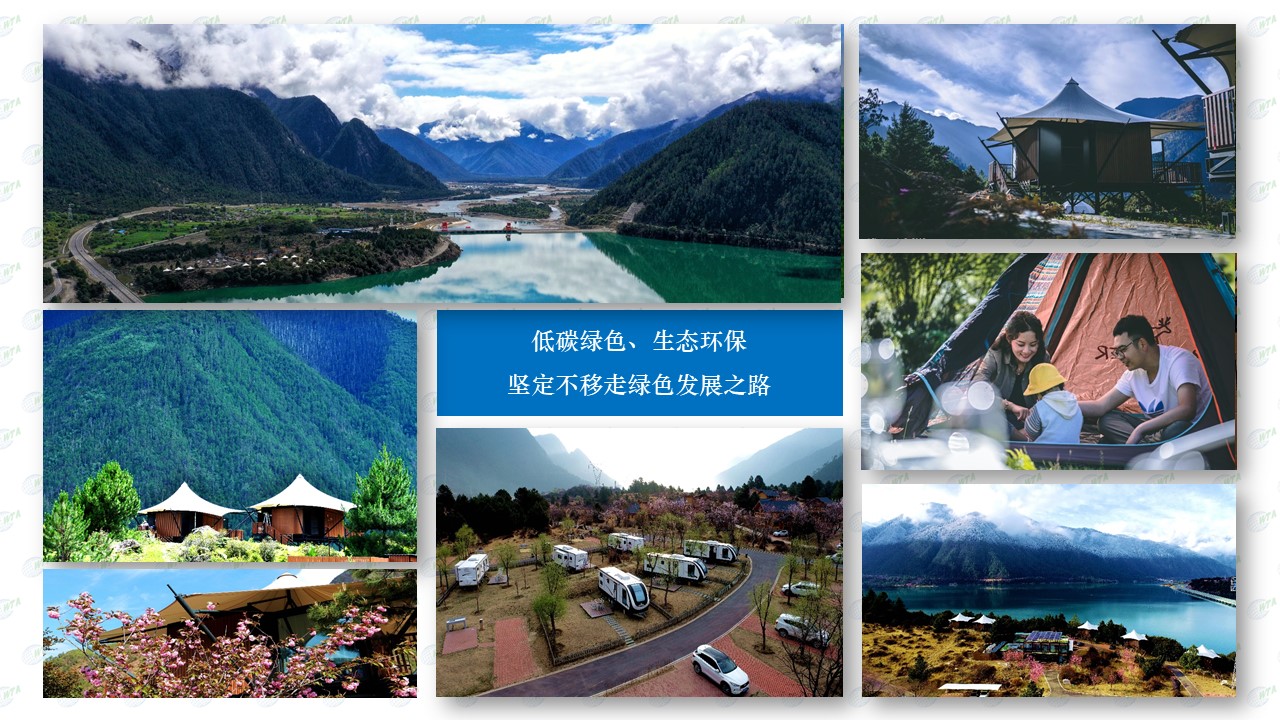
Fourth, adhere to the concept of low-carbon, green development and ecological and environmental protection, and unswervingly follow the path of green development. Ecological resources have great potential for economic development. Therefore we should fully leverage the advantages of natural resources, and embed the concept of green development into the industrial chain and economic chain. We should abandon the development model that damages or even destroys the ecological environment, and abandon the short-sighted practice of pursuing development at the expense of the environment. OCT, a member of the WTA, has built the Nanshan International Car Camping Site in Nyingchi, Tibet, by taking into account local conditions and the mountainous landform. In building the camping site, it fully considered existing terrain and vegetation while designing and installing the prefabricated buildings, preserved large areas of pine trees, cycads and original ecological shrubs, and blended man-made facilities into the natural environment.
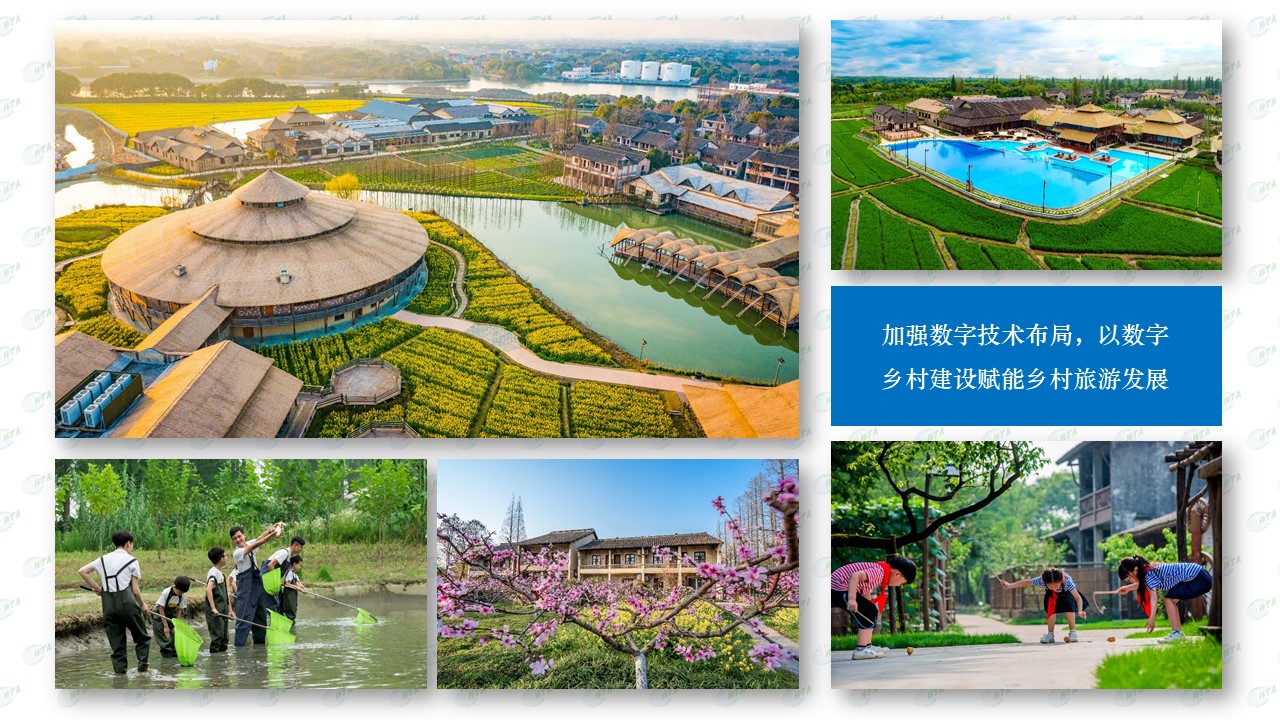
Fifth, strengthen the development and application of digital technology, and empower rural tourism development with digital technology. Digitizing villages is an important part of building a digital China. We will accelerate the deployment of 5G, artificial intelligence, Internet of Things and other facilities in rural areas, so that they can keep pace with the times and narrow the digital gap with urban areas. Seizing the opportunity presented by China’s ongoing pilot project of building a digital countryside, we will promote the development of intelligent tourism and intelligent services, strengthen farmers’ digital literacy and skills, stimulate rural tourism consumption potential, and improve the visitor experience. Another of our member units CYTS actively promotes the application of digital and intelligent technologies, develops intelligent tourism and VR-enabled immersive experience in Wucun, Wuzhen, Zhejiang Province, creating a new tourist experience and empowering rural tourism development with digital technology.
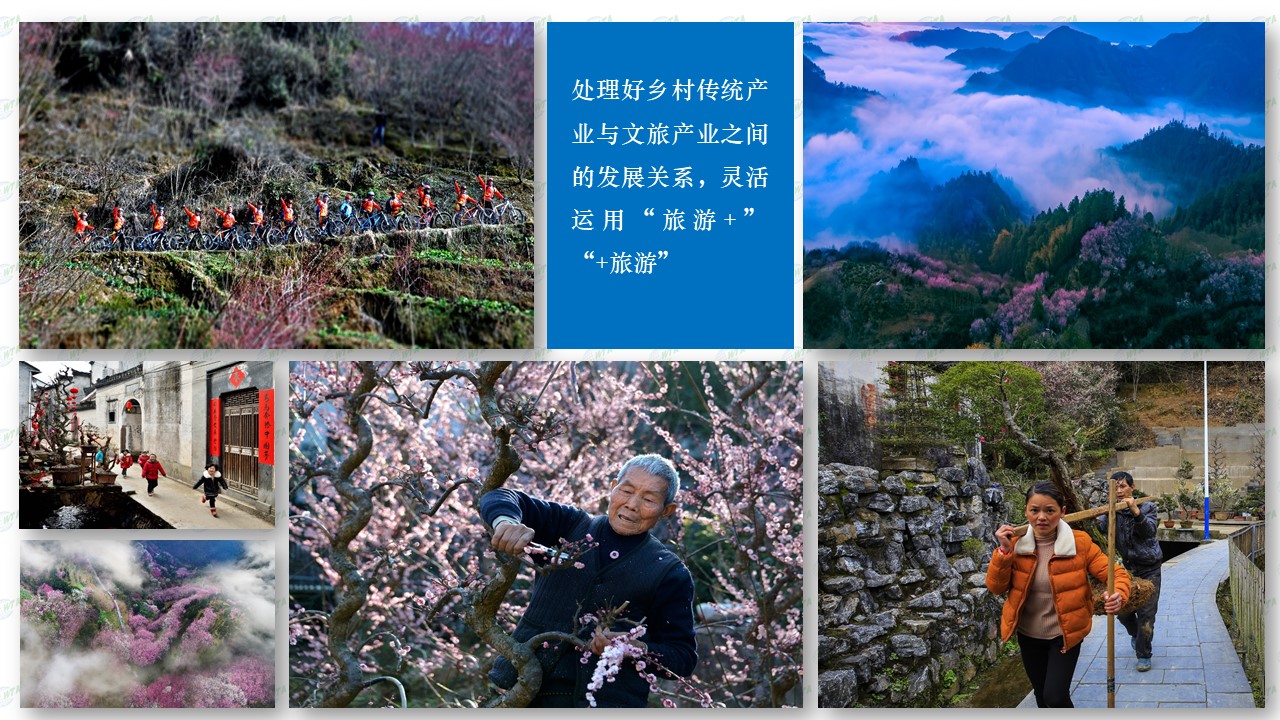
Sixth, properly handle the relationship between traditional rural industries and the culture & tourism industry, and flexibly use the “tourism plus” and “plus tourism” models. Rural revitalization needs to focus on rural reality, agriculture and farmers, on the ecological environment, ways of production and life, adapt to local conditions, find the right positioning and highlight local features. We should rationally distribute rural specialty industries and tourism by taking the whole industrial chain into consideration, flexibly apply the “tourism plus” and “plus tourism” models, provide impetus for the development of rural traditional industries, and tap the potential for the transformation and upgrading of the tourism industry. In the village of Maihuayu, Huangshan, Anhui Province, centering on the traditional potted-landscape industry, local government actively explores a new industry integration model that combines potted landscape with tourism, and with celebrations, extends the value chain of this traditional industry by tourism, continuously pushes the boundary of traditional potted landscape industry, and stimulates the consumption market, to lay a foundation for its sustainable development.

As stressed by President Xi Jinping, to rejuvenate the whole nation, we must revitalize the countryside. The most arduous tasks associated with the goal of building a modern socialist society in all respects and realizing the great rejuvenation of the Chinese nation are those in rural areas and realizing the great rejuvenation of the Chinese nation lies in rural areas, where also lies the broadest and deepest foundation. We must firmly safeguard the achievements made in poverty alleviation, effectively align the effort to consolidate and expand the achievements in poverty alleviation with that to promote rural revitalization, give better play to the role of tourism in driving the development of numerous other industries, and unleash the multiplier effect.
As an old saying goes, “if you want to go fast, go alone; if you want to go far, go together.” The WTA will strengthen exchanges and cooperation with peers at home and abroad in developing rural tourism, share China’s practices of rural revitalization through with the world, and contribute to the sustainable development of the world.
WTA Attends 42nd China Harbin International Ice and Snow Festival
2026.01.06WTA Vice Chair and Secretary-General ZHENG Hao Visits ASEAN-China Centre
2025.12.31WTA Chair ZHANG Xu Attends 2025 Consultation Meeting of Hainan Provincial Expert Advisory Panel on High-Quality Tourism Development
2025.12.22WTA Chair ZHANG Xu Attends 2025 Consultation Meeting of Hainan Provincial Expert Advisory Panel on High-Quality Tourism Development
2025.12.22U.S.-China Study Travel Dialogue Successfully Held in Hangzhou
2025.11.22WTA Vice Chair and Secretary-General ZHENG Hao Meets with Secretary of Tourism of Mexico City
2025.11.20